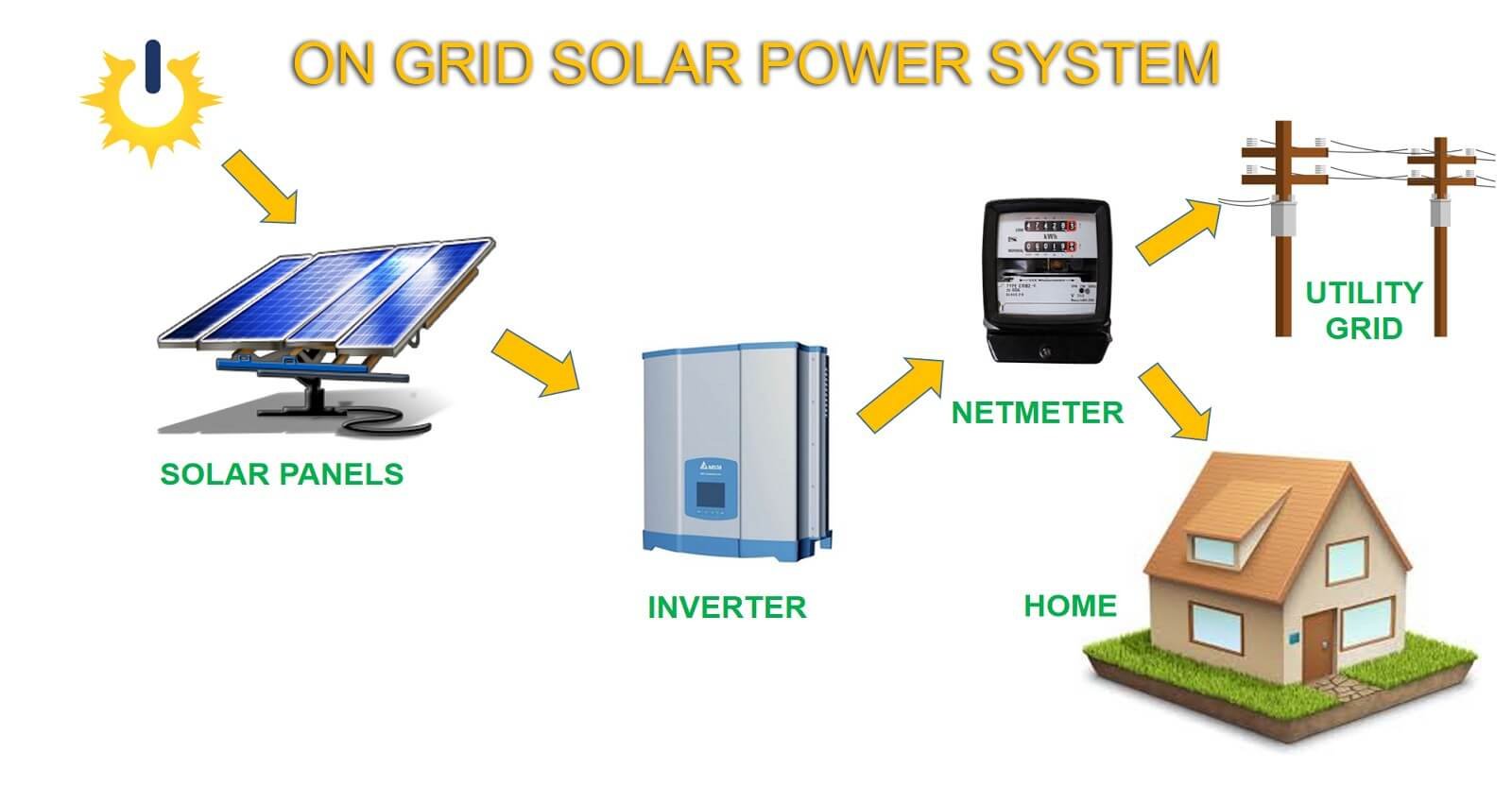On-grid means your solar system is tied to your local power GRID. This is what most residential homes will use because there's always backup.
The reason why most homes prefer on-grid solar is that the utility system acts as your battery space. If you are producing more energy with your solar panels or system than you are using, the excess energy is sent to your grid’s power company, allowing you to build credit that you can cash out with at the end of the year, in a process called net metering. Being grid-tied is beneficial because you don’t have to buy an expensive battery back-up system to store any excess energy.
Unlike hybrid systems, on-grid solar systems are not able to function or generate electricity during a blackout due to safety reasons. Since blackouts usually occur when the electricity grid is damaged; If the solar inverter was still feeding electricity into a damaged grid it would risk the safety of the people repairing the fault/s in the network.
Lower Installation Cost
An on grid system does not need batteries. Hence, the overall price of the system would go down. This can help make solar power more accessible for a lot of people. Batteries can usually double the price of a solar system. If you still use grid energy you won’t need any power storage since you can just switch to grid energy when the sun starts to go down. On grid systems are helping lots more people start using solar power.
Avail Power Bill Discounts
Since you don’t have a battery, you can just send this surplus back to the grid to gain credits that you can use in your bill. Since you are using grid electricity too, you would be getting a bill for this. Sending surplus solar energy back to the grid gets discounts and some people end up paying no bills at all. This is because the surplus is enough to cover the bill. Hence, even with an on grid system you can end up paying little to nothing on a monthly basis.
Latest Project Description
The CIAL Solar Power Project is a 40-megawatt photovoltaic power station built at COK airport, India, by the company Cochin International Airport Limited. Cochin International Airport became the first fully solar-powered airport in the world with the commissioning the plant.
The plant comprises 92,150 solar panels laid across 94 acres near the international cargo complex. It is capable of generating 100,000 units of electricity daily and is also equipped with supervisory control and data acquisition system also known as SCADA.
Client Details
Scope of Services
PV Material Demand Analysis,
Client Name
CIAL Domestic Airport
Project Role
Performance Check
Start Date
March 2018

